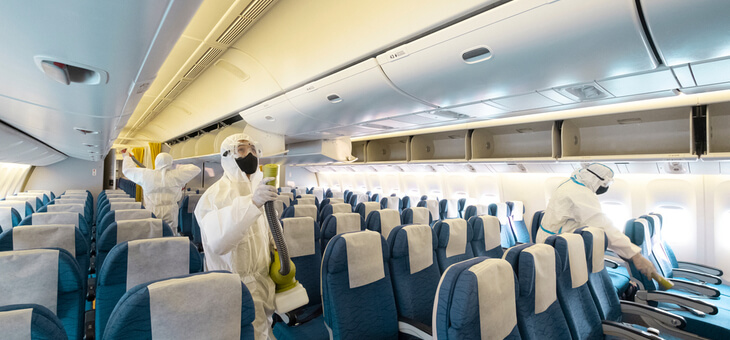International travel may still seem some way away, despite improving vaccination numbers across the country, but Australian scientists may have created a way for the border to be opened more safely.
Just last week Qantas chief executive Alan Joyce announced that his company expected flight to countries with high vaccination rates to resume from mid-December, and this research from CSIRO scientists may make it a reality.
The scientists have modelled a way to determine how many cases of COVID-19 could be travelling on any international flight, based on data from the first six months of the pandemic.
Read: How to get the most out of a cruising experience
It is hoped that the modelling could help Australian authorities make decisions about international travel.
The tool, which was developed between the CSIRO and Queensland University of Technology researchers, can forecast the potential infections on each flight using the number of incoming travellers and the rate of disease in the countries they are arriving from.
Researchers evaluated the travel bans implemented by the Australian government at the start of the pandemic showing they lowered the number of COVID-19 cases brought into the country by 88 per cent.
Read: The world’s most stunning swimming pools
CSIRO research scientist Dr Jess Liebig said the model gives governments another tool to aid complex decisions on travel restrictions and the opening of borders.
“The model is a flexible framework that can be used to quantify the effects of travel restrictions and to evaluate proposed relaxations,” Dr Liebig said.
“It also enables us to pinpoint the groups of travellers most likely to be carrying the virus, so authorities can more efficiently direct healthcare and biosecurity control strategies.”
Read: Qantas announces further protection for frequent flyers
The scientists applied the model to two scenarios; one with open borders and another that reflects the actual travel restrictions implemented by Australia between January and June 2020.
During this period Australia introduced travel bans on China, Iran, South Korea and Italy due to their high rates of COVID-19 disease before a full travel ban on all foreign nationals commenced on 20 March 2020 to curb the spread of the virus.
| Country | Date of Ban | Estimated % reduction in imported cases of COVID-19 |
| China | 1 February 2020 | 94.45% |
| Iran | 1 March 2020 | 32.81% |
| South Korea | 5 March 2020 | 94.41% |
| Italy | 11 March 2020 | 77.9% |
“Our modelling shows that without travel restrictions, over 48,000 COVID-19 cases were likely to have been imported to Australia from January to May 2020,” Dr Liebig said.
“However, all of Australia’s travel bans successfully lowered imported cases into Australia by 88 per cent, to an estimated 6000 cases over the studied period.”
Queensland University of Technology’s Professor Raja Jurdak said the model is the first to quantify the expected number of COVID-19 importations from all countries globally into a particular country.
“The effectiveness of travel bans on individual countries varies widely and depends heavily on the behaviour of returning residents and citizens,” Prof. Jurdak said.
“If we can better understand and forecast the likely spread of COVID-19 through air travel, we can make more informed decisions about when and how to reopen international borders.”
When do you expect Australia to restart international travel? When would you feel safe to travel overseas again? Why not share your thoughts in the comments section below?
If you enjoy our content, don’t keep it to yourself. Share our free eNews with your friends and encourage them to sign up.

